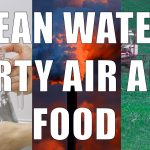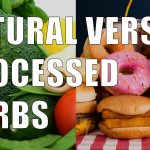Bound Angle Pose
- At September 07, 2021
- By Daniel
- In Asana, Health & Wellness, Yoga Benefits
 0
0

Bound Angle Pose is a seated pose that measures your hip and leg flexibility. Bound Angle can be used instead of Lotus for mediation. Many people do not have the flexibility to bend their legs to the floor. That is OK. In time, your flexibility will increase the more you do the pose. If you are not to the point where you can do the pose as pictured, rest your knees on blocks or a folded blanket to relieve the strain on your hips.
English Name: Bound Angle Pose
Sanskrit Name: Buddha Konasana
Difficulty Level: 2
Start Position: Staff
Instructions:
Step 1.
From Staff pose, bend your knees and draw your feet as close to your body as possible.
Step 2.
Holding both feet with your hands open your knees out to the side. Maintain a straight spine.
Step 3.
Hold the pose for 4 or 5 breathes, or as long as it feels comfortable.
Step 4.
Return to Staff pose and repeat if desired.
Physical Benefits:
- Tones abdominal muscles
- Elongates spine
- Improves circulation
- Opens up the chest
- Improves leg and spine flexibility
- Strengthens legs, arms, and torso
- Improves digestions
Mental Benefits
- Reduces stress
- Improves focus
- Relieves mild anxiety & depression
Contraindications:
- Leg, knee, foot, or ankle injury
- Headache
- Migraine
- Injured or sore coccyx (tail bone)
Fructose Facts & Myths
- At September 04, 2021
- By Daniel
- In Cooking Tips, Diet, Health & Wellness
 0
0
This video shares some facts and myths about the sugar fructose and its affect on weight gain, obesity, type 2 diabetes and metabolic syndrome.
In This video:
• What is fructose? 00:43
• How your body uses fructose. 1:00
• Fructose intolerance. 2:29
• Major sources of fructose. 3:14
• Fructose facts & myths. 4:27
• Fructose fears. 7:07
Best Essential Dietary Nutrient Foods Part VI – Water
- At August 28, 2021
- By Daniel
- In Diet, Health & Wellness, New Video
 0
0
Many people neglect or ignore the need to be hydrated throughout the day.
Water is essential for good health and hydration. A healthy person can go weeks or months without food, but can only survive a few days without water. Becoming dehydrated in a hot, arid climate can result in heat exhaustion or heat stroke in only a few hours. Untreated, heat stroke can cause death.
The video shares why water is an ignored essential nutrient and that food is a major source of dietary water.
Best Essential Dietary Nutrient Foods Part V – Minerals
- At August 22, 2021
- By Daniel
- In Diet, Health & Wellness, New Video
 0
0
How most healthy people can obtain all essential minerals from their diet without taking dietary supplements. This video shares which foods are the best sources of essential minerals, essential macro and trace minerals, their functions, USRDA and sample high mineral foods.
In this video:
• Why are minerals essential? 00:38
• Which minerals are essential? 1:00
• Food vs. dietary supplement minerals. 1:38
• Mineral RDA and best food sources. 2:58
Related Videos
Calcium: https://youtu.be/afc7ts3ApCY
Iron: https://youtu.be/bGMSLAm0eLE
Iodine: https://youtu.be/tPVZ_Gc2DXU
Magnesium: https://youtu.be/CVys_UnLwNk
High Potassium: https://youtu.be/5fJdQyGdlNE
Low Potassium: https://youtu.be/tUSkdc5AsE4
Best Essential Dietary Nutrient Foods Part IV – Vitamins
- At August 14, 2021
- By Daniel
- In Diet, Health & Wellness, New Video
 0
0
This video shares why vitamins are essential, the USRDA for essential vitamins and best food sources. Most healthy adults cam obtain all essential vitamins eating a balanced diet of carbohydrates, fats and protein.
In this video:
• Why are vitamins essential? 00:43
• Why you need vitamins. 1:13
• Fat vs water soluble vitamins. 1:52
• Food vs. dietary supplement vitamins. 3:15
• Vitamin RDA and best food sources. 4:53
Related Videos
Vitamin B12 Foods: https://youtu.be/ndRxIbUFCZI
Vitamin C Foods: https://youtu.be/-pNf06HYwEM
Vitamin D Foods: https://youtu.be/aQyqwJyqXW8
Vitamin K foods: https://youtu.be/iYV05XMORRM
Best Essential Dietary Nutrient Foods Part III – Carbohydrates
- At August 10, 2021
- By Daniel
- In Diet, Health & Wellness, New Video
 0
0
Why carbohydrates from plant foods are essential. Plant foods are a natural source of fiber and 100s of micronutrients like polyphenols.
In this video:
• What are carbohydrates? 00:43
• Why carbs are essential. 2:12
• Good carbs, bad carbs. 3:30
• How many carbs do you need? 5:48
• Fiber, vitamins, minerals & phytochemicals. 12:03
• Carbs, food allergies and anti-nutrients. 14:49
Related Videos
Good Carbs vs Bad Carbs Part I: https://youtu.be/0YVvhQHSLHg
Good Carbs vs Bad Carbs Part II: https://youtu.be/Poc5aT1HJkU
Calculating Net Carbs: https://youtu.be/tXIv33zCKlo
Carbs, Sugar & Diabetes: https://youtu.be/dsk9OA5nF6k
27 High Fiber Foods: https://youtu.be/wwW7ZB3IDNA
Coffee Dehydration Myth
- At August 08, 2021
- By Daniel
- In Diet, Health & Wellness
 0
0
Some people including doctors claim drinking coffee causes dehydration. Coffee is the third most popular beverage in the world behind water and tea.
Caffeine in coffee and to a lesser extant tea can increase urination. Increased urination without replenish lost fluids can cause dehydration. But, with millions of coffee drinkers and tens of thousands of coffee shops around the world there have been no reported incidence of coffee drinkers being hospitalized with coffee induced dehydration.
In This video:
• What is dehydration? 00:34
• Your brain and fluid levels. 1:49
• Does caffeine cause dehydration? 2:50
Best Essential Dietary Nutrient Foods Part II – Protein
- At August 06, 2021
- By Daniel
- In Cooking Tips, Diet, Health & Wellness
 0
0
Protein is an essential nutrient. The human body does not use protein directly, it uses nine essential amino acids in protein to produce proteins like muscle cells and hemoglobin.
Many prepared foods emphasize their protein content and protein supplements including powders, bars and beverages may provide more protein them most people need.
In this video:
• Protein, energy, and muscles. 00:42
• Protein and amino acids. 2:53
• How much protein do you need? 4:37
This is the second video in a six part series about essential nutrients.
Best Essential Dietary Nutrient Foods Part I – Fats
- At August 04, 2021
- By Daniel
- In Cooking Tips, Diet, Health & Wellness
 0
0
Dietary fat is an essential nutrient. This video shares why dietary fat is essential and risks associated with eating diets high in fat especially saturated fat from meat, dairy, butter, and coconut oil.
This video is part I of a six part video serious about obtaining essential nutrients from natural, low calorie foods.
Full Boat Pose
- At August 03, 2021
- By Daniel
- In Asana, Health & Wellness, Yoga Benefits
 0
0
 Full Boat Pose is a continuation of Half Boat Pose. Some people find that can do Half Boat but not Full Boat. The secret is staying focused on the pose after finding your center of balance. Both Boat Poses are seated balance poses. And maintaining your balance throughout life can prevent falls and serious injury. Boat Pose also builds core, arm, and leg strength.
Full Boat Pose is a continuation of Half Boat Pose. Some people find that can do Half Boat but not Full Boat. The secret is staying focused on the pose after finding your center of balance. Both Boat Poses are seated balance poses. And maintaining your balance throughout life can prevent falls and serious injury. Boat Pose also builds core, arm, and leg strength.
English Name: Full Boat Pose
Sanskrit Name: Paripurna Navasana
Difficulty Level: 5
Start Position: Half Boat
Instructions:
Step 1.
From half boat pose, straighten your legs while maintaining a straight, extended spine.
Step 2.
Lengthen and energize your fingers beyond your knees.
Step 3.
Hold the pose for 4 or 5 breathes, or as long as it feels comfortable.
Step 4.
Slowly lower your legs to the floor coming into staff pose. Repeat if desired.
Physical Benefits:
- Lengthens neck, spine, arms and legs
- Strengthens core muscles
- Opens up the chest, shoulders, and throat
- Improves balance
- Improves digestion and circulation
- Improves posture
- Strengthens legs, hips, groin, arms and abdomen
Mental Benefits
- Improves focus
- Calms the mind
- Improves concentration
Contraindications:
- Pregnancy
- Low blood pressure
- Neck, low back, shoulder and hip pain
- Leg and ankle pain or injury




